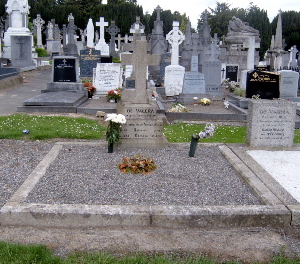31 August 1767: Henry Joy McCracken, United Irishman, was born on this day. His ancestors on both sides had come from the Continent to escape religious persecution. His father was a wealthy businessman and when he was twenty-two he was entrusted with the management of a cotton factory. In 1791 he co-operated with Thomas Russell in the formation of the first society of United Irishmen in Belfast and when the society in 1795 assumed its secret and military organization, he became one of the most trusted members of the council in the north.
In 1796 he was arrested and imprisoned in the notorious Kilmainham Jail in Dublin along with his brother William. After his release he returned to Belfast and renewed the plans to bring about a Revolution in Ireland. He was appointed head of the United Irishmen of Antrim. In June of 1798 he raised the insurgents there to take arms and attack the Crown Forces. He and his followers briefly seized Antrim town but were defeated and dispersed.
McCracken went to hiding in the vicinity but was betrayed and was taken prisoner. His trial and conviction by court-martial followed. The British offered to spare his life on condition of his giving information concerning other leaders. His aged father encouraged him to spurn the proposition. On 17 July 1798 he was executed by hanging at the Cornmarket in Belfast on the evening of the conclusion of his Trial.
His sister Mary Ann McCracken accompanied him almost to the last, and wrote:
At five p.m. he was ordered to the place of execution…. I took his arm, and we walked together to the place of execution, where I was told it was the general's orders I should leave him, which I peremptorily refused. Harry begged I would go. Clasping my hands round him (I did not weep till then) I said I could bear anything but leaving him. Three times he kissed me, and entreated I would go... I suffered myself to be led away... I was told afterwards that poor Harry stood where I left him at the place of execution, and watched me until I was out of sight; that he then attempted to speak to the people, but that the noise of the trampling of the horses was so great that it was impossible he should be heard; that he then resigned himself to his fate.
The United Irishmen, their Lives and Times, Robert R. Madden
